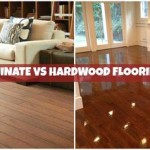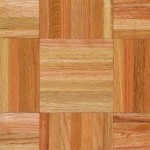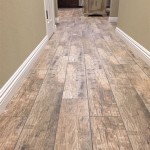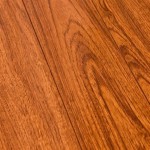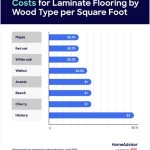Essential Aspects of DIY Hardwood Flooring Cost
Upgrading your home with the warmth and elegance of hardwood flooring can be a rewarding project, but it's crucial to consider the costs involved. DIY hardwood flooring can save you significant labor expenses compared to professional installation, but there are still essential factors to keep in mind to ensure an accurate budget.
The cost of DIY hardwood flooring can vary depending on several factors, including the type of wood, the floor area, and additional materials and tools required. Understanding these aspects can help you plan your project efficiently.
1. Hardwood Type and Grade
The type of wood you choose will significantly impact the cost. Exotic or rare species, such as Brazilian walnut or Brazilian cherry, command a premium compared to domestic options like oak or maple. Additionally, the grade of the hardwood refers to the quality and appearance of the wood, with higher grades resulting in higher costs.
2. Floor Area
The square footage of your flooring area directly influences the materials you need. Measure the area accurately to determine the number of planks required and avoid purchasing excess materials.
3. Underlayment and Subfloor
Underlayment, a layer beneath the hardwood flooring, provides moisture resistance, soundproofing, and a level base. The cost of underlayment depends on the type and thickness. Subfloor preparation may also be necessary, involving leveling or replacing damaged areas.
4. Tools and Equipment
Investing in essential tools and equipment is crucial for proper installation. This may include a flooring nailer, miter saw, spacers, and other tools specific to hardwood flooring. Renting or purchasing these tools can add to the overall cost.
5. Additional Materials
Apart from the hardwood planks, underlayment, and tools, you may need additional materials such as glue, nails, and molding. These costs can add up, especially when using high-quality materials.
Tips for Saving Money
While DIY hardwood flooring can be cost-effective, there are ways to further reduce expenses:
- Consider budget-friendly wood species or lower grades.
- Shop around for the best prices on materials and tools.
- Plan your project carefully to avoid mistakes and waste.
- Hire a professional for specific tasks, such as leveling the subfloor or refinishing the finished floor.
Conclusion
DIY hardwood flooring can be a cost-effective way to upgrade your home, but it's important to consider all the essential factors that contribute to the overall expenses. By carefully planning your project, purchasing materials wisely, and using proper techniques, you can create a beautiful and durable hardwood floor that adds value to your home.

Average Hardwood Flooring S In 2024 Forbes Home

Inexpensive Wood Floor That Looks Like A Million Dollars

Inexpensive Wood Floor That Looks Like A Million Dollars

Diy Hardwood Floors Under 1 50 Sq Ft The Harper House

Affordable Diy Hardwood Flooring How We Saved Thousands Your Home Renewed

Inexpensive Wood Floor That Looks Like A Million Dollars

Make Your Own Plank Flooring Using 1 X 12 Lumber Hallstrom Home

Diy Hardwood Floors Under 1 50 Sq Ft The Harper House

Inexpensive Wood Floor That Looks Like A Million Dollars

How To Install Hardwood Flooring Step By Forbes Home
Related Posts


